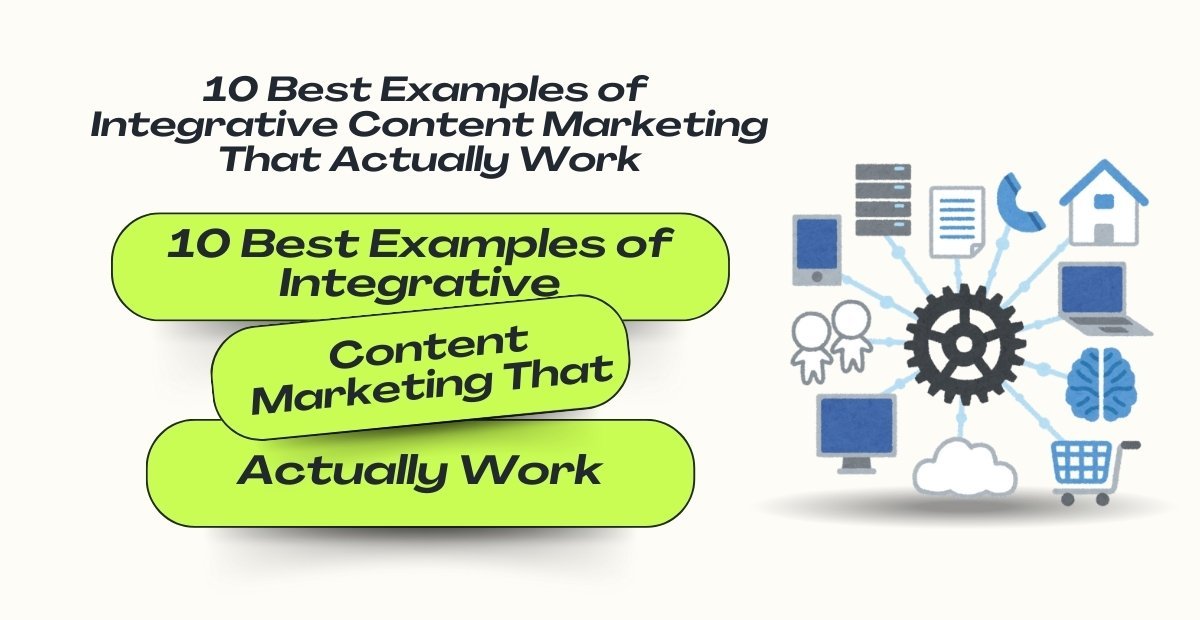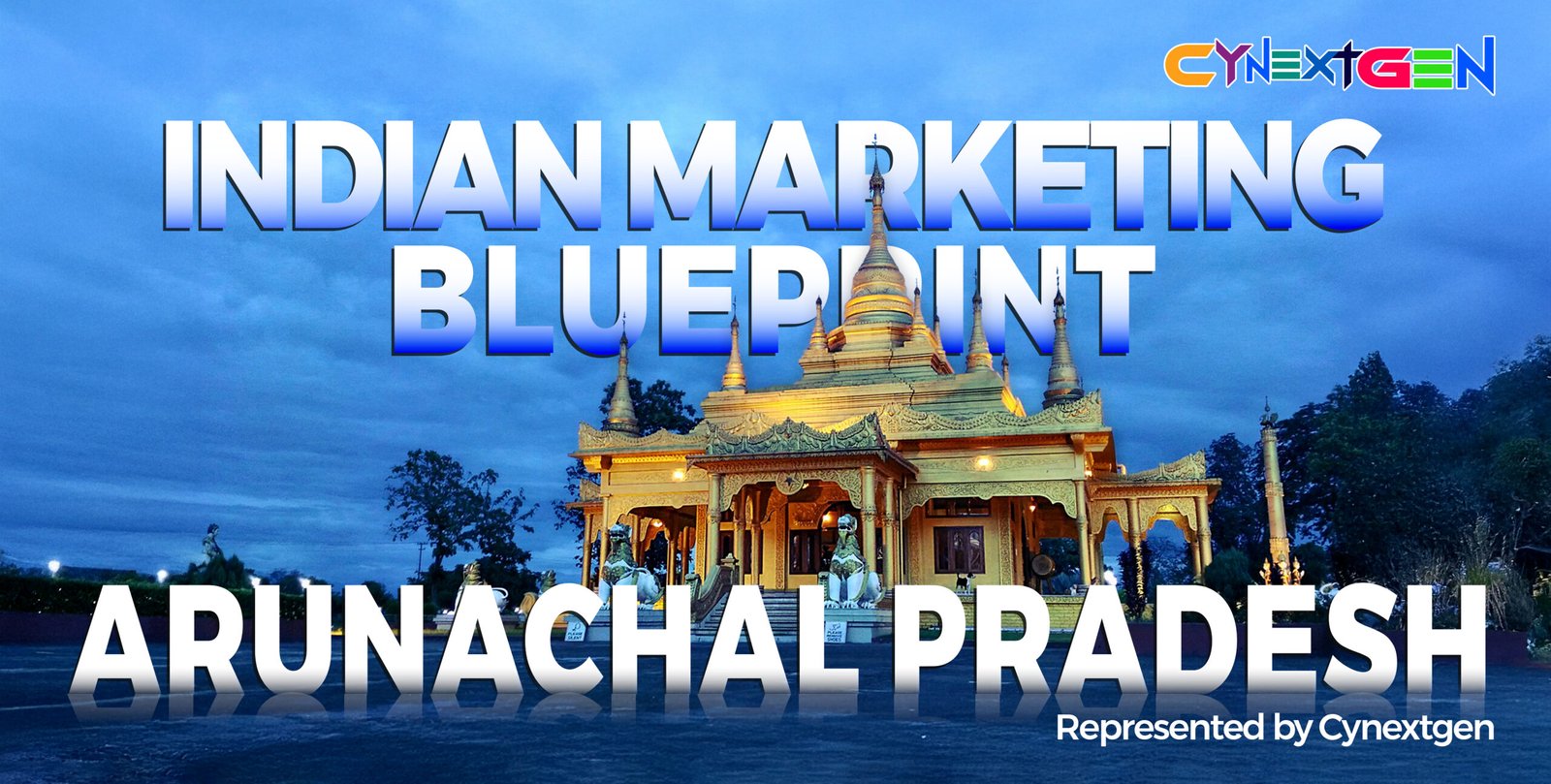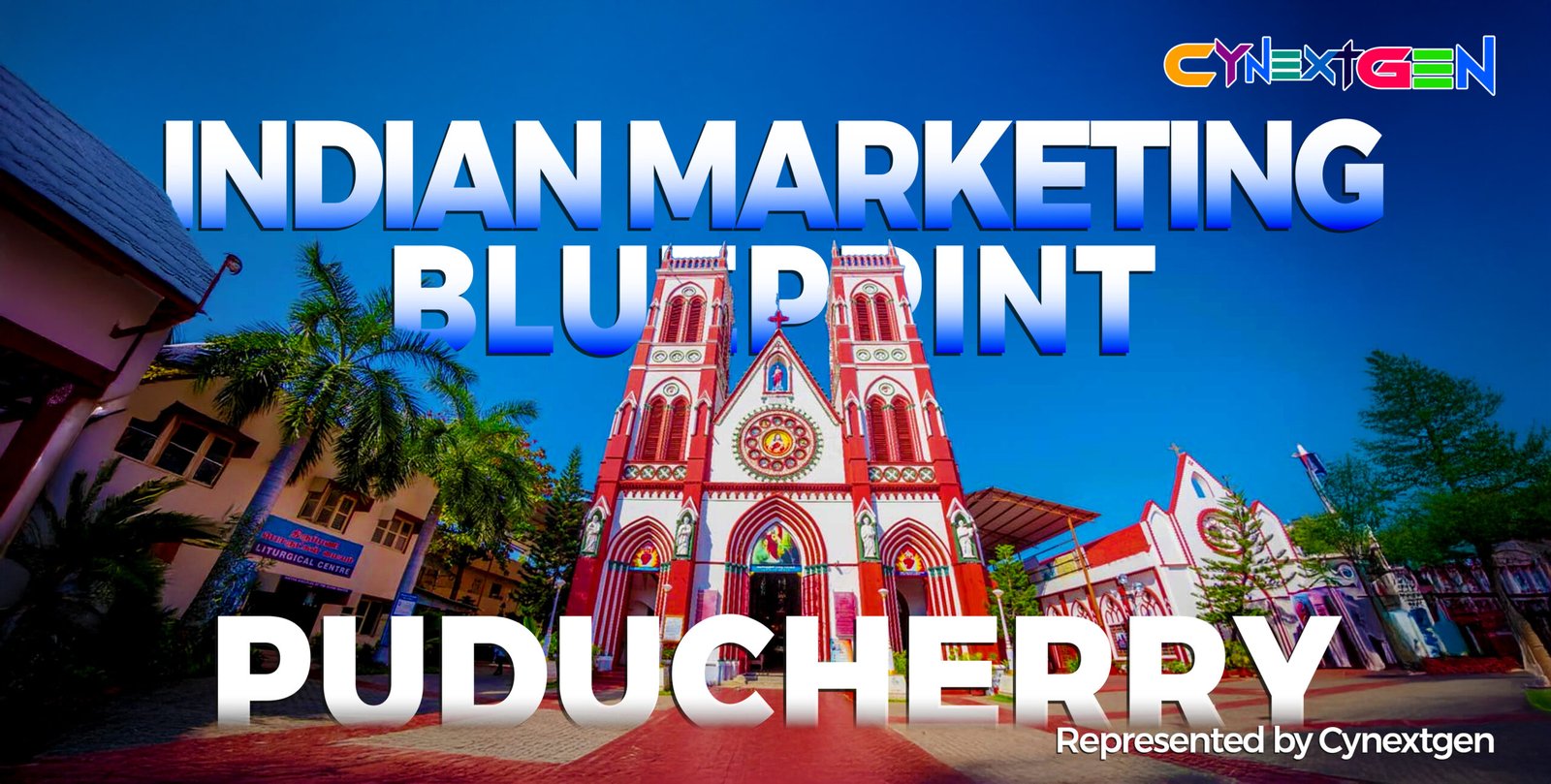
10 Best Examples of Integrative Content Marketing That Actually Work
Integrative Content Marketing is the practice of aligning all content efforts, blogs, videos, social media posts, email campaigns, and paid ads into one unified strategy. Instead of each channel working in isolation, they connect to create a consistent message and experience. This approach ensures that whether a customer sees a brand on Instagram, YouTube, or a website, they encounter the same story and value. It reduces confusion, builds trust, and makes the entire journey smoother. Unlike siloed campaigns that often compete with one another, integration ensures every piece of content supports the larger business goal.
What is Integrative Content Marketing?
Integrative Content Marketing is the practice of creating content that flows seamlessly across multiple channels, guiding users through every stage of their journey. Instead of treating blogs, social media, emails, and ads as separate efforts, it blends them into a connected system. For example, a blog post may spark interest, a social ad reinforces the message, and an email nurtures the lead until conversion.
Unlike traditional marketing, which often pushes one-way messages, integrative content marketing is interactive and user-driven. It adapts to where the audience is, whether scrolling Instagram, opening a newsletter, or searching on Google. This approach ensures consistency in tone, design, and value delivery, while also tracking how users move between channels.
Content Mix Flow:
Content (blogs, videos, reels, emails) → Channels (social, search, web, apps) → User Journey (awareness → consideration → conversion → retention).
Key Elements of a Successful Integrative Campaign
An effective campaign is more than running ads across multiple platforms. It connects every channel into one cohesive story. Integrative Content Marketing works best when each touchpoint feels part of a bigger narrative that guides users toward action.
Here are the key elements of integrative content marketing you should focus on:
- Cross-channel storytelling: Create one central brand story and adapt it across social media, email, blogs, and ads. Each platform should add a unique angle while staying consistent with the bigger picture.
- Customer journey alignment: Map your content to awareness, consideration, and decision stages. For example, short reels may grab attention, while case studies help during evaluation.
- Data-driven personalization: Use analytics and behavioural data to tailor content. Personalized recommendations, emails, and retargeted ads improve engagement and conversion.
- Consistent tone and design: Keep your voice, visuals, and messaging uniform. It ensures customers recognize and trust your brand across channels.
- Feedback and optimization: Track performance, listen to user feedback, and refine campaigns continuously for better results.
10 Best Real-World Examples of Integrative Content Marketing
Great brands don’t just tell stories, they connect stories, products, and customer experiences into one unified journey. That’s the real power of Integrative Content Marketing. It’s not about one-off ads; it’s about blending content, platforms, and touchpoints so the audience feels consistently engaged. Below are ten of the best content marketing campaigns that prove how integrative strategies can drive loyalty, growth, and cultural relevance.
Example 1 – Red Bull’s Extreme Sports Storytelling
Red Bull built an empire by going beyond energy drinks. Their Integrative Content Marketing strategy revolves around extreme sports, sponsorships, live events, and branded media like the Red Bull Stratos jump. Every touchpoint, YouTube videos, magazines, or on-ground stunts links back to the brand’s “gives you wings” promise. It worked because Red Bull didn’t sell a drink; they sold a lifestyle. By integrating content with action sports culture, Red Bull became a media company as much as a beverage brand.
Key lesson: Build a brand identity that extends beyond your product.
Mini Table:
| Brand | Strategy | Key Result |
| Red Bull | Extreme sports + branded content | Global recognition beyond beverages |
Example 2 – Coca-Cola’s “Share a Coke” Campaign
Coca-Cola personalized its bottles with common names and encouraged customers to “share a Coke.” This was more than packaging; it integrated product design, social media sharing, and personalized content experiences. The Integrative Content Marketing magic was in how online posts, selfies, and offline sales reinforced each other. The campaign worked because it made buying Coke feel personal and share-worthy. Millions of user-generated posts extended the reach at almost no extra cost.
Key lesson: Personalization + participation = stronger emotional connection.
Example 3 – HubSpot’s Educational Content Ecosystem
HubSpot turned itself into a trusted authority by giving away guides, webinars, and templates for free. Their Integrative Content Marketing strategy blended blogs, YouTube tutorials, certifications, and events into one seamless ecosystem. It not only attracted leads but also nurtured them with consistent value. The campaign succeeded because it aligned education with product adoption. Customers who learned from HubSpot’s free resources were more likely to adopt their software later.
Case Study Box:
HubSpot – Education as Growth Engine
- Challenge: Stand out in a crowded SaaS space
- Approach: Offer value-first content via blogs, courses, and reports
- Result: Millions of leads, global recognition, and high trust scores
Key lesson: Teach your customers and they’ll trust you with their business.
Example 4 – Nike’s Digital + Retail Integration
Nike connected its mobile apps, in-store experiences, and online platforms into a single journey. Their Integrative Content Marketing approach included Nike Run Club, exclusive content drops, and in-store personalization. Users could track workouts, share progress on social media, and then shop for gear tailored to their data. This seamless digital-retail integration boosted both loyalty and sales. Why did it work? Nike used content not just to inspire but to drive action across all touchpoints.
Key lesson: Merge physical and digital channels for a seamless brand journey.
Example 5 – Spotify Wrapped Personalized Data Storytelling
Spotify Wrapped is one of the most famous examples of integrative content marketing. Every year, Spotify turns user data into shareable stories, combining personalized playlists, vibrant visuals, and social media buzz. It worked because it blended entertainment, personal identity, and community. Millions shared their Wrapped results, making it one of the best content marketing campaigns ever. Spotify proved that user data, when framed creatively, can be a powerful storytelling tool.
Key lesson: Let customers see themselves in your brand story.
Mini Table:
| Brand | Strategy | Key Result |
| Spotify | Personalized data storytelling | Viral global campaign, massive shares |
Example 6 – Starbucks Rewards & Social Media Strategy
Starbucks integrated its rewards program with app content, in-store promotions, and social engagement. Customers received personalized offers, push notifications, and seasonal campaigns that encouraged them to share experiences online. This Integrative Content Marketing approach worked because it combined utility (rewards) with lifestyle storytelling. Starbucks made loyalty feel fun and rewarding, turning everyday purchases into content-worthy moments.
Key lesson: Blend loyalty programs with shareable digital content.
Example 7 – Lego’s User-Generated Content + Storytelling
Lego’s “Ideas” platform invited fans to submit designs, vote, and even see their creations turned into real products. It was Integrative Content Marketing at its best: user-generated content, community engagement, product development, and storytelling all tied together. It worked because Lego gave fans real ownership of the brand story. Beyond sales, this created emotional loyalty across generations.
Key lesson: Give your community a voice in shaping your brand.
Example 8 – Airbnb’s Community-Centred Experiences
Airbnb doesn’t just sell stays, it sells experiences through storytelling. Their Integrative Content Marketing combines host stories, traveller experiences, and curated guides into every touchpoint. From Instagram campaigns to local blogs and Airbnb Experiences, content and product are seamlessly integrated. It worked because people trusted authentic stories from other users more than ads. Airbnb positioned itself as a lifestyle movement, not just a booking app.
Case Study Box:
Airbnb – Storytelling as Trust Builder
- Strategy: Showcase real hosts and guests
- Why it worked: Authenticity drives trust
- Result: Massive growth in bookings and loyalty
Key lesson: Authentic user stories can build more trust than polished ads.
Example 9 – Apple’s Seamless Product & Content Marketing
Apple integrates content with its product in a way few brands can. From cinematic product launch videos to interactive website experiences, everything tells one consistent story of design and innovation. Their Integrative Content Marketing extends into in-store experiences, tutorials, and community engagement like “Shot on iPhone.” It works because Apple doesn’t separate content from product; they are one. Customers feel they’re part of something bigger than a purchase.
Key lesson: Make your content feel like an extension of the product.
Example 10 – Amazon’s Personalization & Content Recommendations
Amazon thrives on integrative strategies by using data-driven personalization. Their Integrative Content Marketing blends product recommendations, email campaigns, user reviews, and targeted ads. Customers don’t just shop; they experience a tailored journey. It worked because Amazon used real-time data to deliver value at every step, making shopping efficient and addictive. By uniting personalization with content, Amazon created the gold standard in digital commerce.
Key lesson: Use data to create content that feels personal and useful.
Mini Table:
| Brand | Strategy | Key Result |
| Amazon | Personalized recommendations | Increased sales and higher retention |
Final Thoughts
These examples of integrative content marketing show that success comes from weaving stories, platforms, and experiences into one fabric. Whether it’s Red Bull’s adrenaline-fueled videos, Spotify’s viral Wrapped, or Amazon’s personalized journeys, each brand used integration to amplify impact. The best content marketing campaigns don’t just inform or entertain, they connect, engage, and convert across touchpoints. Mastering Integrative Content Marketing means building a system where every piece of content fuels the next, creating a powerful loop of engagement and growth.
Lessons Learned from These Campaigns
Looking at successful campaigns, a few clear patterns stand out. These lessons from content marketing examples highlight what works across industries:
- Personalization builds trust and drives repeat engagement.
- Storytelling creates emotional connections that last longer than discounts.
- An omnichannel approach ensures users meet your brand everywhere they go.
- Consistent voice across formats strengthens recall and brand authority.
- Testing and adapting content keeps strategies fresh and relevant.
Best Practices to Create Integrative Content Marketing Campaigns
An effective campaign today goes beyond single-platform posts. It’s about Integrative Content Marketing, building a system where every piece of content works together across the customer journey. To make it successful, start by mapping your content to awareness, consideration, and decision stages. Blog posts can drive discovery, case studies build trust, and emails close the loop.
Data and automation are powerful allies. Analytics reveal which formats drive clicks or conversions, while automation tools ensure the right message reaches the right audience at the right time. It creates a flow that feels personal and efficient.
Cross-channel consistency matters too. A campaign should carry the same tone, visuals, and core message whether it appears on LinkedIn, Instagram, or email. When audiences recognize a unified story, trust deepens and engagement rises.
Checklist for Campaign Success
Do’s
- Map content to each stage of the customer journey
- Use analytics to refine targeting and messaging
- Keep branding and tone consistent across platforms
- Test and optimize continuously
Don’ts
- Create content without a clear purpose
- Ignore performance data or feedback
- Send mixed messages on different platforms
- Treat campaigns as one-off projects
Future of Integrative Content Marketing
The landscape of digital marketing is changing fast, and Integrative Content Marketing is at the center of this shift. Brands can no longer rely on static blogs or generic campaigns. Instead, the future of content marketing is about combining technology, creativity, and user trust into one seamless experience.
Here are the key trends shaping this future:
- AI-powered personalization: Content will adjust in real time to each user’s preferences, making experiences feel tailored and relevant.
- Interactive and immersive content: AR and VR will move beyond gaming, letting audiences explore products, try virtual demos, or attend branded events without leaving home.
- Omnichannel consistency: From social feeds to email to in-store screens, every touchpoint must carry the same message and tone.
- Privacy-first marketing: With rising concerns over data use, brands will win by being transparent, secure, and user-centric.
Integrative Content Marketing brings these pieces together into a scalable system. It allows brands to meet people where they are, engage them with meaningful experiences, and build trust over time. The brands that master this integration will stand out in a crowded digital world and shape how audiences connect with stories.
Conclusion – Why Integrative Content Marketing Works
Integrative content marketing brings everything together: storytelling, platforms, and audience touchpoints. Instead of treating channels as separate silos, it creates a seamless experience where one message reinforces another. A video can spark curiosity, a blog can deepen understanding, and social media can drive conversations. This mix not only amplifies reach but also builds trust. The best examples of content marketing that work show how consistency across channels strengthens brand voice and recall. For brands, the real opportunity lies in experimenting with formats, testing new narratives, and creating stories that connect across every digital moment.





Add Comment